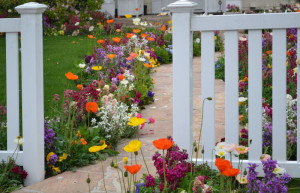Good Shrubs For Spring
Among the first shrubs of spring is the familiar pussy willow which, sometimes as early as February, shows glints of silver gray. At https://gardeninginfo-online.com, we know that in the first warm spell of the new year, prune a few branches for indoors. Thus you can observe close up, and in comfort, how the rows of silver catkins emerge from their red-brown skins. For several weeks they grace the room. Finally the pollen appears, touching them with golden powder. If you keep the stems in water still longer, pale chartreuse leaves and white roots will emerge. Planted outside in April the branches will take hold and thus increase your own supply. Most willows have a special fondness for wet land and river banks, but the pussy willow also thrives where the soil is dry, and always turns to ribbons of furry silver in the early spring sunlight.
 The peepers are scarcely in full song when the Japanese quince unfolds clusters of flame-orange flowers all along its spiny forbidding branches. But don’t let this keep you from gathering sprays of the tightly clustered vivid flowers. If Japanese quince bushes are set one foot apart in a row they grow into a fine flowering hedge. The splendid new hybrid quinces, sometimes called cydonias, are extra hardy, prolific, and beautiful—investigate them.
The peepers are scarcely in full song when the Japanese quince unfolds clusters of flame-orange flowers all along its spiny forbidding branches. But don’t let this keep you from gathering sprays of the tightly clustered vivid flowers. If Japanese quince bushes are set one foot apart in a row they grow into a fine flowering hedge. The splendid new hybrid quinces, sometimes called cydonias, are extra hardy, prolific, and beautiful—investigate them.
With daffodils comes Korean-spice viburnum. The heads of clustered tiny florets are pink in bud, unfold to white, and emit a spicy sweetness. (The viburnums are in the honeysuckle family.) Dry a few blossoms on a window sill, or somewhere airy; tie them in a handkerchief, and slip the package into your clothes or linen drawer. This shrub is hardy and easy. Prune off sucker growth. And don’t spray with any form of sulphur as viburnums are allergic to it.
Flowering shrubs
Flowering shrubs are ideal for everyone who wants quantities of flowers with a minimum of effort. Annually these bushes shower your whole outdoors with bloom, with fragrance, with interesting berries. For many kinds of shrubs, when you gather the blossom-bedecked branches you are performing almost all the pruning necessary. Even if shrubs were the only flower sources on your place, you would still live in the midst of a beautiful garden—and with hardly a care or a chore.
Flowering shrubs are basic, hardy, self sustaining. The first year you plant them they bloom, and annually thereafter. And how varied are their uses. Next to the house they soften angular lines, while their fragrance drifts in the open window. They form a splendid background for perennials. Some flower-ing shrubs make fine hedges and screen plantings. There are shrubs for bloom in all the four seasons. They provide you with large, extravagant bouquets—great sweeps of spirea tangled with flowering quince, long graceful branches of pussy willow reaching your ceiling, or one huge magnolia flower floating in a bowl on the dining room table.
Perhaps you would like to be a specialist and concentrate on one sort. Grow a lilac hedge, a bank of forsythia, a wall of mock orange, or a swoop of firethorn. Or use flowering shrubs in a small special corner feature. One kerria with blue grape hyacinths; two mock oranges with scilla and tulips nearby; three Viburnum carlesi and Virginia bluebells on the shady side. You can also mingle several together in a border along your drive or at the boundary line of your land. A tangle between you and your neighbor gives you beauty, fragrance and privacy. Lilacs, Viburnum tomentosum, butterfly bush, laburnum—all make a fine thicket and carry the blooming period through many weeks in soft shades of lavender, yellow, and white.
If your place is really tiny, grow a single shrub specimen for one dramatic accent. Choose wisely, to assure eye-appeal the year around.
Visit our home page for more gardening information.